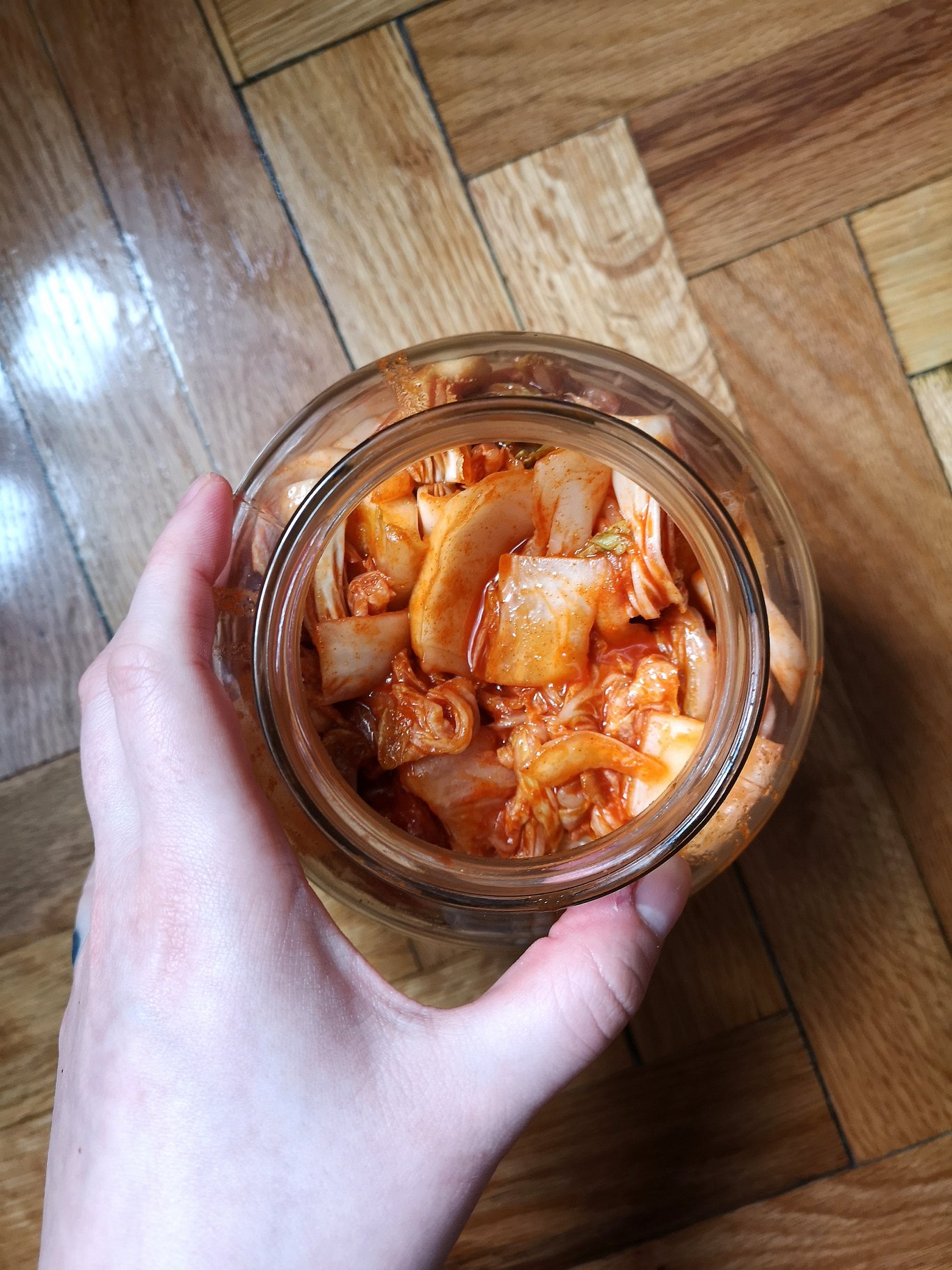Are you a kimchi lover wondering how to make kimchi at home, now that it’s not so easy to get it from the local store?
Here’s how to make your own easy, fermented kimchi with this authentic Korean recipe (without fish sauce!)

I know I always said I won’t make home made kimchi because the taste has nothing to do with the original but since I can’t seem to buy it anymore here, and honestly making it at home is quicker and cheaper than to order it online, I changed my mind… Happens.
To be honest traditional kimchi isn’t vegetarian. Most authentic kimchi recipes include fish sauce, which adds umami taste.
I decided to change fish sauce to gluten free soy sauce, and it turned out delicious, still!

For those who are not familiar with it, kimchi is fermented cabbage made by lacto-fermentation of napa cabbage, which is fermentation by Lactobacillus bacteria.
It’s spicy and umami and a little sour and perfect for adding zing to everything, even to your french fries! (Yes, I know!! Recipe coming later)


Why should you eat kimchi?
It’s packed with probiotics, which help promote a healthy cut microbiome. Its main ingredient, napa cabbage is also an excellent source of vitamins K, C, and folate.
And when the fermentation is complete, 1 cup (150 g) of kimchi has just 23 calories while being relatively high fiber.

What you will need:
1 large head of napa cabbage (about 2 kg)
1/4 cup salt
2 tbs of gochujang (Korean chili paste – if you can’t get one you can use any kind of other chili paste)
1-2 tbs garlic powder
1 tbs ginger powder
3 tbs water
1 tbs sugar
1 tbs gluten free soy sauce

How to make kimchi?
Wash your hands well before every time you touch the ingredients. Wash all of your supplies with hot water.
Wash the cabbage well, then cut it into quarters, lengthwise.
Place it in a large bowl and cover completely with salt, working the salt between all the leaves. Let sit for about 2 hours, massaging and turning the cabbage every 30 minutes, until cabbage has wilted down.
When finished, drain and rinse the cabbage very well (until a torn-off piece no longer tastes overly salty).
Squeeze out excess water. Cut the bottom stem from the cabbage so the leaves are loose. Chop into bite-sized pieces.
While cabbage is in the brine, add the gochujang, garlic, ginger, sugar, soy sauce and water to a clean bowl.
Whisk it well until even and smooth.
Combine the well-rinsed cabbage and pepper paste in a large bowl, mixing well with clean hands.
Pack the mixture into clean glass jar(s), pressing down so that it’s submerged by the juices and there are as few air pockets as possible.
Leave at 5 cm of free space at the top of the jar, then seal shut with a lid.
Set the sealed jar on a plate or bowl (to catch possible spills), and place somewhere room temperature and out of direct sunlight, letting it ferment for 2 to 5 days.
Check on the kimchi everyday, pushing the cabbage down with clean fingers or a spoon to release gasses and prevent leaks.
It’s done when the taste is slightly sour and cabbage is a bit soft (depends on your taste – The longer you let the kimchi ferment, the more sour and less crunchy it will become).
Simply taste it each day when you check on it, and transfer it to the fridge when it’s the perfect amount of ripe!
Refrigeration will pause the fermentation process, where it will stay fresh for several weeks or months.





